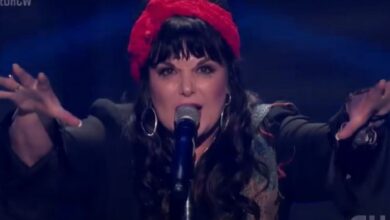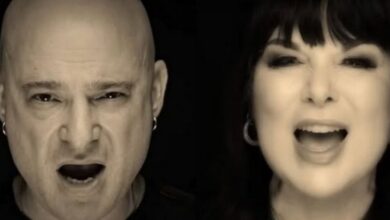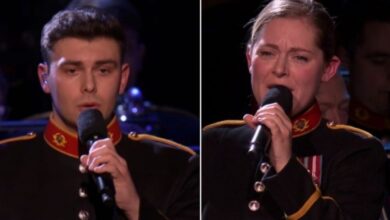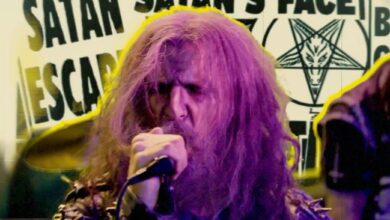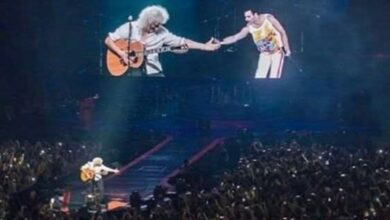Ann Wilson’s Stunning “Dream On” Performance at Hampton Beach: A Masterclass in Power, Control, and Emotion
When Ann Wilson took the stage at the Hampton Beach Casino Ballroom on August 18, 2021, she turned a historic venue into a living diary of her musical journey. The audience that night witnessed a set weaving Heart classics with interpretations that breathed new life into timeless rock anthems. The room’s intimate acoustics amplified every whisper and crescendo, allowing Wilson’s unmistakable voice to dominate the evening with precision and warmth that echoed through every seat in the venue.
One of the evening’s defining moments arrived when Wilson launched into Aerosmith’s “Dream On.” The song’s soaring melody and emotional intensity require both restraint and boldness—a combination few vocalists can master. Yet, Wilson transformed the challenge into a masterclass in control. As fans held their breath, she guided the performance from tender vulnerability to unshakable strength, giving the anthem a deeply personal dimension that left no listener untouched.
The rendition unfolded like a carefully drawn map. At first, the band stayed subdued, giving Wilson space to let each line breathe. Her phrasing was conversational, almost intimate, as though speaking directly to the crowd before gradually ascending to her trademark power. When the chorus came, her voice filled the room effortlessly—strong yet supple, delivering emotion without overexertion, and displaying the refined maturity that decades of stage experience bring.
The musical arrangement was built around tension and release. Guitars traced broad harmonic outlines while the piano and ambient textures filled in the emotional middle ground. As the song developed, the drums opened up, cymbals began to shimmer, and bass tones deepened the sonic bedrock. Together, they created a steady, mounting wave that paralleled the song’s own theme of endurance and renewal, supporting Wilson’s vocal rise with understated force.
Her backing band, the Amazing Dawgs, played a crucial role in shaping that energy. The lineup—Tom Bukovac on guitar, Tony Lucido on bass, Paul Moak on keys and guitar, and Sean Lane on drums—operated like a single organism. Their ability to hold back or surge forward at just the right moment gave Wilson the freedom to improvise phrasing and dynamics. It was the kind of synergy that only veteran musicians can summon after countless nights on the road together.
The setlist that night blended Heart’s defining songs with inspired covers. Fans recall a journey through “Crazy on You,” “Magic Man,” “Straight On,” and “Barracuda,” punctuated by tributes to rock icons like Led Zeppelin, Queen, John Lennon, and Steve Earle. Nestled among these selections, “Dream On” stood as the emotional centerpiece—less a cover and more an homage to the genre itself. Each song fed into the next, shaping a cohesive narrative of influence and reinvention.
Later that year, professionally filmed footage of the Hampton Beach concert surfaced online, revealing multiple camera angles that showcased the show’s atmosphere in vivid detail. Fans who had only seen grainy audience clips could now appreciate the full visual tapestry—the lighting cues, the interplay between musicians, and Wilson’s expressive gestures. This professional documentation offered a glimpse behind the performance’s emotional force, allowing its layered textures to shine on screen.
Online reactions gravitated toward other standout performances from the same night—particularly “Black Dog” and “Going to California.” These songs framed “Dream On” within a mini-suite of classic-rock reinterpretations, revealing Wilson’s instinct for honoring musical giants without replicating them. Her approach focused on breathing authenticity into each phrase, giving familiar melodies a refreshed emotional pulse and revealing the subtle storytelling power hidden inside legendary compositions.
Inside the Casino Ballroom, acoustics played a silent but powerful role. Known for its clarity and natural resonance, the venue rewarded restraint. “Dream On” began softly, almost conversationally, as if the walls themselves were listening. Gradually, the sound grew, blooming into a full-bodied resonance that enveloped the crowd. By the song’s climax, the balance between band and voice created a breathtaking harmony—an exhale of emotion that left the room in awe.
Wilson’s phrasing revealed her deep respect for the song’s structure. While keeping the verse-chorus architecture intact, she stretched syllables, bent vowels, and occasionally delayed her cadences to create emotional suspension. Subtle touches of blues and soul gave the familiar melody new textures. Those nuances—almost imperceptible to casual ears—became the foundation for why her version resonated as both homage and reinvention, timeless yet undeniably hers.
At that point in the tour, “Dream On” had become a recurring theme, appearing in several consecutive setlists across the Northeast. Each night, Wilson fine-tuned its pacing and balance, exploring how slight variations in breath and timing altered its emotional impact. The Hampton Beach rendition thus captured a song mid-evolution—refined through repetition, shaped by intuition, and elevated by a singer rediscovering the joy of transformation within a classic framework.
Audience accounts underline how carefully Wilson walked the line between tribute and originality. Fans praised her effortless command of the upper register and her ability to summon tension without strain. The band’s disciplined restraint and emotional awareness allowed every high note to soar without overwhelming the listener. What emerged was not a technical showcase but an emotional dialogue between artist and audience—one built on mutual trust and admiration.
Because both fan-shot and professional recordings circulated online, the performance’s energy continued to reach new audiences. The consistency between the various clips revealed a distinct pattern—gentle beginnings, gradual expansion, explosive peaks, and a clean, resonant finish. That structure mirrored the emotional rhythm of the song itself, proving that Wilson’s understanding of dynamic flow went beyond instinct—it was architectural, deliberate, and deeply musical.
Its placement within the setlist was equally symbolic. Framed between Heart’s defining songs and tributes to other icons, “Dream On” acted as a bridge between eras—connecting Wilson’s personal legacy to the broader lineage of rock storytellers. For longtime admirers, it illuminated the emotional threads linking her past and present. For newcomers, it was a revelation: proof that the essence of rock can evolve without losing its soul.
The sound engineering that night enhanced that connection. Rather than overwhelming the mix with layers of guitar, the arrangement allowed space—each instrument had breathing room, supporting the vocals instead of competing. The piano provided warmth, drums guided emotion through touch rather than force, and bass served as the glue that held the ensemble together. The result was a perfectly sculpted balance between intimacy and grandeur.
Taken together, the Hampton Beach performance captured Ann Wilson’s ability to reimagine the familiar through authenticity and nuance. “Dream On” became more than a tribute; it was a living conversation between generations of rock music. Her voice carried decades of history while still sounding vital, urgent, and true. That August night remains a crystallized moment of artistry—proof that great songs never age, only deepen when interpreted by hands that truly understand their heartbeat.
Months after the show, clips continued to circulate, breathing new life into Wilson’s summer tour legacy. The buzz around Hampton Beach only grew as more viewers discovered the performance online. In revisiting “Dream On,” Ann Wilson didn’t merely recall a golden era—she reaffirmed why rock’s greatest anthems endure: because, in the right hands, they can still remind us to reach higher, feel deeper, and keep dreaming on.
